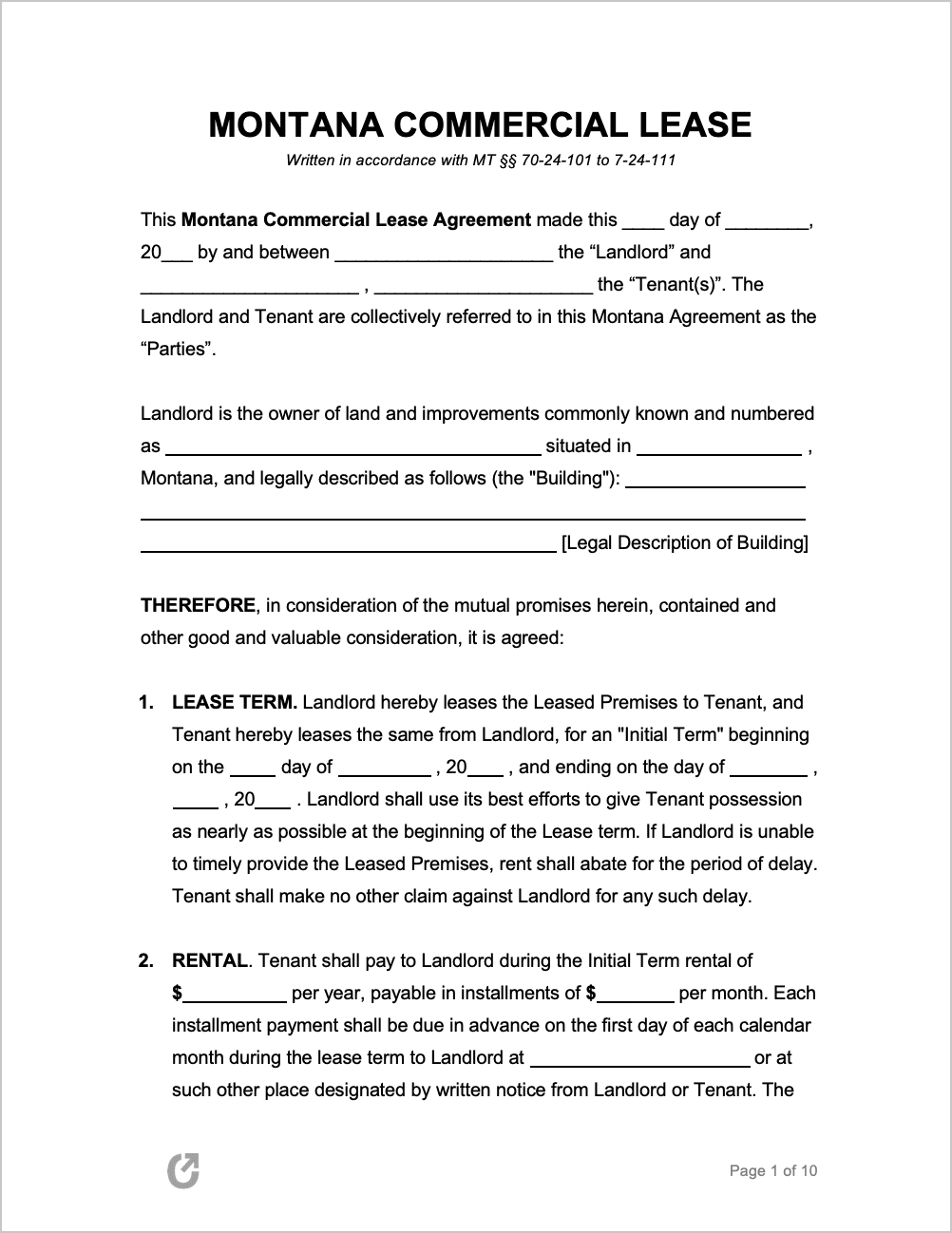Montana Commercial Lease Agreement
The Montana Commercial Lease Agreement, also known as a Business Rental Agreement, serves as a method for establishing a legally binding relationship between a business tenant and a landlord or property manager concerning the rental of a property. This contract ensures both parties understand their obligations during the lease term and can be utilized in court for judicial relief in case of a breach. Prior to signing the agreement, it is customary for the parties to negotiate and adjust any terms as needed to accommodate their specific requirements.
What’s Included
- Parties and Property: Identifies the landlord and tenant, as well as the property being leased.
- Lease Term: Specifies the duration of the lease and the commencement and termination dates.
- Rent and Security Deposit: Outlines the rental amount, payment schedule, and security deposit.
- Maintenance and Repairs: Describes the responsibilities of both parties for property upkeep and maintenance.
- Utilities and Operating Expenses: Indicates the allocation of utility and operating costs between the landlord and tenant.
- Lease Type: Specifies whether the lease is a Triple Net (NNN), Modified Gross, or Gross lease.
- Alterations and Improvements: Defines the terms under which the tenant can make changes or improvements to the property.
- Insurance and Liability: Details the insurance requirements for both parties and addresses liability concerns.
- Default and Remedies: Establishes the conditions for default and the available remedies for both parties.
- Assignment and Subletting: Sets the rules for assigning or subletting the property.
- Option to Renew: Indicates whether the tenant can renew the lease and the terms for renewal.
- Compliance with Laws: Requires both parties to comply with applicable federal, state, and local laws and regulations.
- Dispute Resolution: Outlines the dispute resolution process between the landlord and tenant.
- Notices: Provides information on how notices and other communications should be delivered.
- Entire Agreement and Amendments: States that the lease constitutes the entire agreement and outlines the process for amendments.
